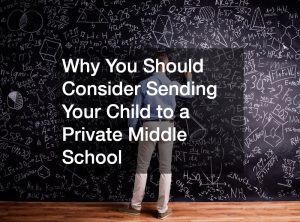- A school is an educational institution where teachers pass their knowledge to students of all ages.
- The first formal education was established in ancient Greece and Rome. Students received military training and were taught reading and writing, physical training and playing instruments.
- Medieval times brought about Christian learning, while the Age of Enlightenment allowed access to school for every student.
- The Industrial Revolution established training schools and hired women teachers, while the printing press made literacy rates skyrocket.
There isn’t a student who has not wondered about the person who invented school. Whether it’s during tedious calculus or exhausting gym class, all prospective students sometimes struggle with the idea of education. Most pupils know the importance of school, but they go a long way until they find their passion for the institution.
The Merriam-Webster dictionary defines a school as an institution dedicated to teaching children or an organization that provides instructions and learning for life. It is an educational institution that provides a learning and disciplinary space for prospective students under the direction of teachers.
High-quality education gives a person the capabilities to navigate through the world. If a person is not educated, they lack essence and cannot function as a productive member of society. Thanks to schooling, a prospective student understands the environment, learns the basics of life and becomes sociable while following the rules.
So, what does a prospective student mean? Renowned scholars define a prospective student as a person with a bright future. The real prospective student definition refers to a student in the ongoing learning process. Join us as we debunk all myths concerning school and answer the uncertainty of who was the mastermind behind inventing the school.
The Early Origins of Education
History plays a significant role in understanding modern education. It’s crucial to understanding the educational system we have today.
Who invented schools? Schooling has always been around, but the school system that helps students learn in an efficient and organized way started in Ancient Rome, China, and Greece.
Education in Ancient Civilizations

Ancient Greece and Rome had formal schools where students would gather in a learning area called academics. However, the Byzantine Empire established the first primary educational system in 425 A.D. These primary schools were nothing like today’s schools because they were meant for building military personnel.
Besides military training, students would also learn :
- Mathematics
- History
- Philosophy
- Language.
In ancient times, education focused on hunting, pottery making, and communication, all intending to teach children independence. Knowledge was usually passed on from the elders.
The Emergence of Formal Schools
Apart from Greece and Rome, formal education had roots in ancient India and China. The earliest schools here focused on reading, writing and calculating. School was not mandatory in those days, but it could drastically improve a person’s life.
Classical Greek and Roman education greatly impacted today’s school systems. The natives of Athens started their education at around age seven.
The curriculum in ancient Greece included:
- Writing and reading
- Physical training
- Learning musical instruments
The first-ever writing equipment included a stylus similar to a pen and a wax tablet. Memorization was important in ancient Greek education, and the kithara was one of the most popular instruments. Although the ancient Greek educational system was limited, it gave rise to brilliant minds like Pluto, Socrates, Sophocles, Euripides, and others.
The Impact of Religion on Education
The appearance of Christianity provoked the Greek Fathers to prove that the Christian view of the universe aligned with Greek Thought. Christianity was even regarded as the culmination of philosophy, which is achieved through liberal studies. If there are no liberal studies, Christians cannot be expected to live a fulfilling life of faith or obedience nor attain an intellectual understanding of the faith.
In ancient Rome, the Roman theologian Tertullian was suspicious of the pagan culture of faith but deemed it necessary for education. One thing was certain. The Christians who wanted their children to be well-educated had to send them to secular schools.
The Middle Ages and the Renaissance
During the Middle or Dark Ages, Christianity dominated all spheres of society and only the wealthy had access to schools. The schools were usually secular in nature and were reserved just for the boys. There were no public schools, and those who were privileged enough to get an education either had a tutor come to their home or learned from schools run by the church.
Each subject aimed to preserve Christian learning or the study of scriptures, theology, and canon law. Getting an education was seen as meeting the church’s needs, with some of the most educated getting positions in secular institutions.
During the Middle Ages, mathematics peaked in curiosity and became the main focus of education. The Renaissance period saw the rise of science as a main source of education. This was the time when students began to slightly turn their focus from Christian learning toward futuristic sciences.
The Rise of Universities
The first university was established in 1088 in Bologne, Italy. Appropriately called “The University of Bologne”, it’s among the longest-running universities in the world.
Universities back then functioned differently. In the early times, students grouped together and hired educators to teach them various things and ideas. Scholars from different fields passed their knowledge down to a group of students from various locations. Students were in control, as they paid for the services. They decided who would remain in the position of professor.
Over time, professors started to group together and get their own rights which resulted in them setting up degrees and exams. But, the field of education saw its rebirth with the start of Renaissance humanism. Once humanism entered the picture, education in Europe shifted the focus away from medieval scholasticism towards classical education in the fields of philosophy, rhetoric, science, art, and more.
The Age of Enlightenment and the Industrial Revolution
Another intellectual movement that followed the Renaissance in Europe was The Age of Enlightenment in the 18th century. The main purpose of the Enlightenment was criticism or spreading new breakthroughs of knowledge in all fields among people.
The Age of Enlightenment preached that through education, the nation could be enlightened, and the people would also be better prepared to live their lives as good citizens. It taught that school education would give people the opportunity to better develop their natural talents.
The Emergence of Public Education
Thanks to the invention of the printing press, literacy rates skyrocketed, and the demand for books was never higher. There was also a shift in public interest from religious books to almanacs. This was because books became available to the public.
During the Age of Enlightenment, public cultural institutions, like libraries and museums, also changed. Public libraries were a direct result of the Enlightenment, were founded by the state and were free for everyone. Before that, libraries were mostly restricted to aristocrats. Once public libraries began to rise in popularity, the general public began to self-educate.
The 18th century also saw the appearance of clubs and coffeehouses where people went to get educated. In England, these lodges and clubs held philosophical, scientific, and political discussions available to the public.
The first coffeehouse of this sort was established in Oxford. It was a place where people congregated to read, learn and debate on intellectual topics. Coffeehouses were also called Penny University because they garnered a reputation as being a center for informal learning since they functioned as de facto institutions of education.
The Impact of The Industrial Revolution on Education
The industrial revolution also impacted education in many ways. Since new technology required a trained workforce, students had to go attend specialized schools to learn how to maneuver the new machinery. This was a call to establish training schools.
The industrial revolution established specializations in careers, like the textile industry, energy production or the medical fields. Education became mandatory for all and women were also allowed to attend schools. New higher learning institutes were established, while the government began to support education, trained teachers, and explored new education avenues.
New technology, like the printing press, played a pivotal role in the educational revolution because books and literature were now widely available to the public.
The Evolution of Modern Education

The 20th century saw an evolution into modern education. Although the basic principles of public education were already set, parents could send their children to either religious, private, or public schools. At the turn of the century, multi-grade, single-room schoolhouses disappeared in cities but still existed in some rural districts.
A new prevalent schooling model appeared – 8-years of elementary school and 4-years of high school. But, in 1910, a different structure was introduced based on the six-three-three system. This means 6 years elementary, 3 years junior, and 3 years senior high school. This model still prevails in many states today!
Reforms were made in early childhood education through provisions made for preschooling. More teachers and daycare workers worked on learning material for children 5 years and younger! This initiative was seen as the first step towards what we know as kindergarten today.
The Influence of Psychology on Education
In the middle of the 20th century, psychology rose in discoveries and began to influence educational systems. The new psychologists focused on identifying and analyzing new methods of absorbing and retaining new, important information. During this period, educational psychologists developed theories about understanding individual learning, instructional procedures, thought process, etc.
The role of psychology was essential. Students and teachers were provided information to measure learning, create educational experiences, and improve student motivation.
Emergence of Alternative Forms of Education and the Future
The 20th century saw the development of alternative forms of education, such as:
- distance learning
- homeschooling
- multi-age classrooms
- world-schooling
- dual language immersion, etc.
All these systems were regarded as parallel systems of education designated as non-formal.
The future of school systems looked as promising as ever. Thanks to the introduction of technological inventions and online learning, education became accessible to everyone. The invention of the world-wide-web gave rise to all kinds of information available at a click away!
Myths and Misconceptions About the History of Education
Contrary to popular belief, the first public school in America was opened in Boston, Massachusetts, in 1635. The Boston Latin School functioned as a public secondary school only for boys. Philemon Pormont, a Puritan settler considered the original father of American education, ran the school.
The Myth of Horace Mann
There’s a popular myth that Horace Mann was the father of American education. He was more of a modern reformist who spearheaded the Common School Movement that made sure every kid receives a free basic education funded by local taxes. His influence went beyond Massachusetts and spread to other states.
Progressive reformers like Mann probably spread the myth because of the growing anxiety over increased immigration.
The Role of Women in Education
Women played a significant role in the history of education, especially since they were not allowed access to school systems at the beginning. During the industrial revolution, they were allowed to visit schools along with boys. However, when the 1800s hit, women began to play a central role in education as teachers and learners.
Women occupied teaching roles in both formal and informal education settings. This was due to school districts ushering young women into teaching in large numbers, resulting in most of the teachers being women.
Contributions of Non-Western Cultures to Education

Some contributions of non-western cultures to education include borrowings from ancient civilizations like the Greeks and Chinese. This includes activities like debating, critical discussion, essay writing, etc.
Chinese education also influenced the Western educational system thanks to Confucius and his thoughts regarding the imperial examination system.
Misconceptions About the History of Education
A few myths concerning the history of education exist. One evergreen example is that an educator is capable according to their scores, degrees, or level of academics. This was proven to be untrue. One may have several PhDs, but that does not guarantee they’ll be a good teacher.
Another ever-lasting myth is the efficacy in rote learning and complete-memorization tactics. Teachers were concerned with retaining information rather than remembering and understanding the essential knowledge. This misguided perception that a prospective student’s marks are tied to their ability to memorize information rather than think for themselves is the most dangerous myth that transcends modern education.
Conclusion
To sum up, there is no direct inventor of school. There is an array of events and people shaping the educational system as we know it today! From ancient times, when prospective students went through military training, to medieval ages, when all focus was on Christianity, to finally, the Age of Enlightenment and Revolution, where schools allowed access to everyone!
The educational system is no less important now than it was back then, and this importance is what brought its evolution. From being available to only the aristocrats to opening coffeehouses where the average Joe can debate about politics, the educational system proves that it was necessary then as it is now. As time progresses, the extensive history of education proves that the school system will only continue to evolve in days to come!
















